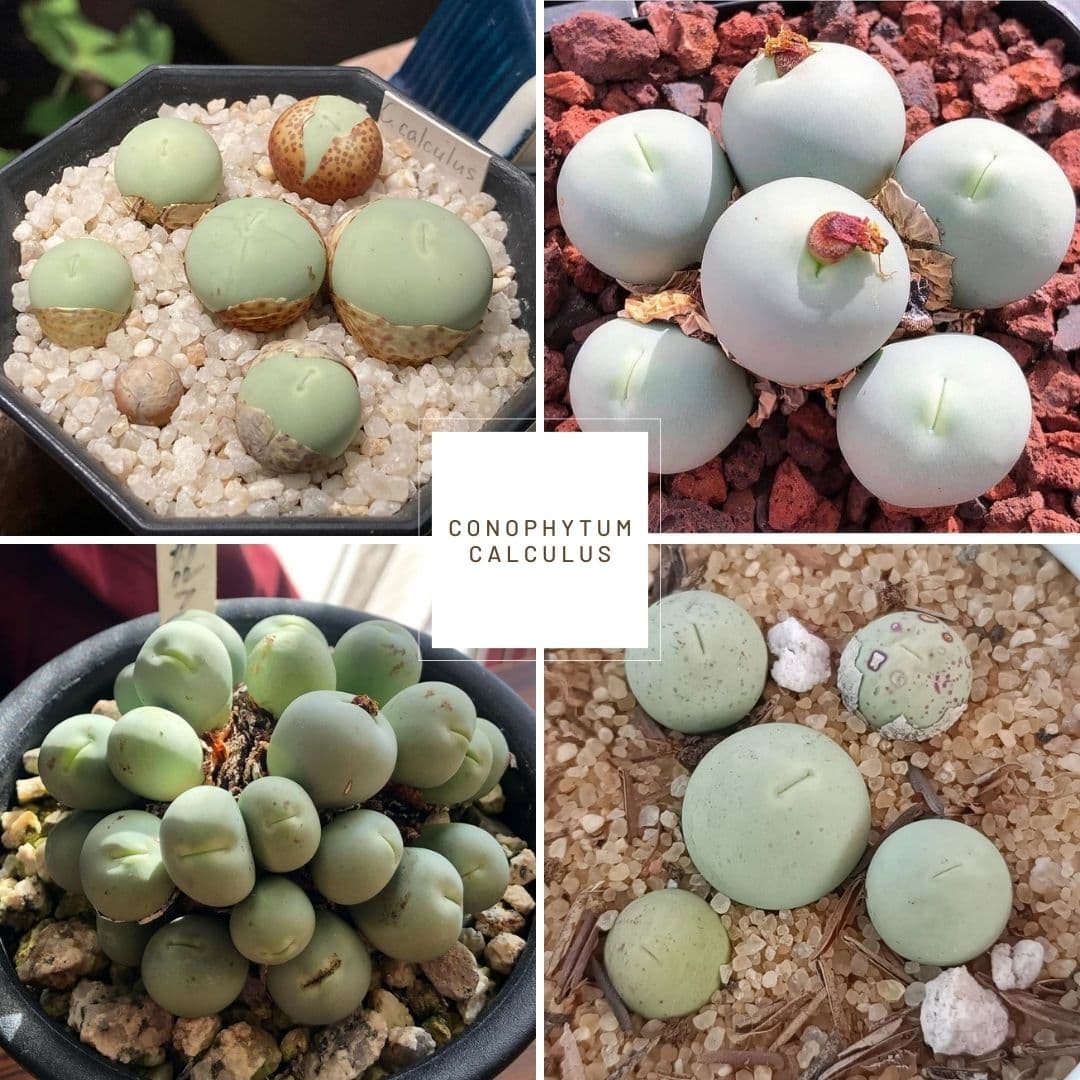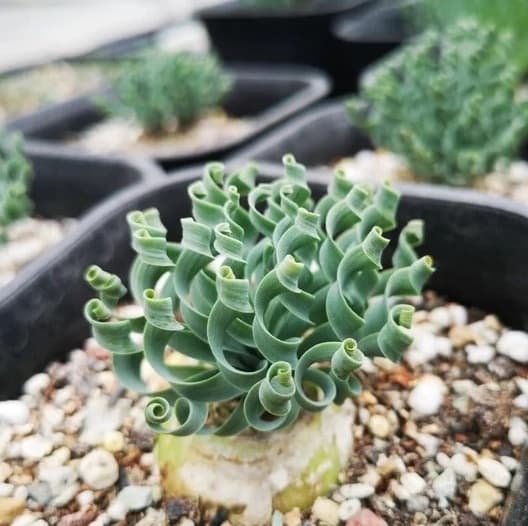Echeveria "Sea Dragon"
Posted by Grace on May 19, 2023
The extraordinary Sea Dragon Succulent, also known as Echeveria "Sea Dragon", is not your ordinary Echeveria - it's a cultivated and patented succulent with captivating qualities.
In this blog post, we'll explore the captivating features of Echeveria "Sea Dragon" and discover how to care for this remarkable plant.
Contents
- Quick Facts about Echeveria "Sea Dragon"
- Appearance of Echeveria "Sea Dragon"
- Leaves
- Flowers
- Fragrance of Echeveria "Sea Dragon"
- Toxicity
- How to Propagate Echeveria "Sea Dragon"
- Care Guide for Echeveria "Sea Dragon"
- Common Problems of Echeveria "Sea Dragon"
- FAQ
- Q: How do you take care of an Echeveria "Sea Dragon"?
- Q: How often should I water Echeveria "Sea Dragon"?
- Q: Can I grow Echeveria "Sea Dragon" indoors?
- Q: Does Echeveria "Sea Dragon" need special fertilizer?
- Q: How big does Echeveria "Sea Dragon" grow?
- Q: Can I propagate Echeveria "Sea Dragon" from a single leaf?
Quick Facts about Echeveria "Sea Dragon"
- Native Habitat: A hybrid succulent plant cultivated Altman Plants - original hybrid patented (PP29814) in 2018. It was created by Renee O'Connell in 2012 and discovered by him in 2013.
- Family: the Crassulaceae family, which is also known as the stonecrop family.
- Water: It prefers infrequent watering, allowing the soil to dry out between waterings. It is important to avoid overwatering, as succulents are susceptible to root rot. The frequency of watering will depend on factors such as the climate, season, and potting medium.
- Sunlight: Echeveria "Sea Dragon" thrives in bright, indirect sunlight. It requires several hours of sunlight each day to maintain its vibrant colors and compact growth. However, it is important to protect it from intense, direct sunlight during the hottest part of the day, as it can lead to sunburn and damage the leaves.
Appearance of Echeveria "Sea Dragon"
Echeveria "Sea Dragon" features thick, fleshy leaves arranged in a tight rosette formation. The leaves have an enchanting blend of blue-green and purple hues, with ruffled edges that resemble waves. It typically grows to a height of approximately 15 to 17 cm (6 to 7 inches). The plant has a spread of approximately 30 cm (12 inches) when fully grown.
 Green leaves of Echeveria "Sea Dragon" (Source)
Green leaves of Echeveria "Sea Dragon" (Source)
This is how Echeveria "Sea Dragon" is described in the orignal US Patent PP29814:
- Rosettes comprised of wide aqua colored leaves with caruncles.
- Anfractuous leaf margins colored rose pink.
- Foliage that is more rounded and wider than many comparable carunculated Echeveria hybrids, which often produce longer, narrower leaves.
- The new cultivar Echeveria ‘Sea Dragon’ produces wider, rounder aqua leaves with centered carunculations, attractively accented by very anfractuous leaf margins in contrasting rose pink, a combination not seen in other comparable Echeverias.
 Echeveria "Sea Dragon" with huge caruncles on the leaves (Source)
Echeveria "Sea Dragon" with huge caruncles on the leaves (Source)
Leaves
The leaves of Echeveria "Sea Dragon" form beautiful rosettes with distinct characteristics. They are wide and have an aqua coloration, giving them a unique and eye-catching appearance. The leaves are adorned with carunculations, which are raised bumps or warts on the leaf surface. These carunculations add texture and depth to the overall look of the plant.
One notable feature of the leaf margins is their anfractuous nature, meaning they have a wavy or undulating edge. The leaf margins are colored in a contrasting rose pink shade, creating an attractive and striking visual contrast against the aqua-colored leaves.
Compared to other carunculated Echeveria hybrids, Echeveria "Sea Dragon" stands out due to its rounder and wider foliage. While many similar hybrids tend to produce longer and narrower leaves, Echeveria "Sea Dragon" showcases a more rounded leaf shape, which adds to its overall charm.
 Echeveria "Sea Dragon" with blue green leaves (Source)
Echeveria "Sea Dragon" with blue green leaves (Source)
Flowers
No flowering observed.
Fragrance of Echeveria "Sea Dragon"
Echeveria "Sea Dragon" does not have a strong fragrance. It is primarily appreciated for its visual appeal and not for its scent.
Toxicity
For Humans
Echeveria "Sea Dragon" is generally considered non-toxic to humans. However, it's always a good practice to keep any plant out of reach of children or pets to avoid potential ingestion or adverse reactions.
For Animals
Echeveria "Sea Dragon" is also generally non-toxic to animals. However, as with any plant, it's advisable to prevent pets from nibbling on the leaves, as some animals may have sensitivities or allergies.
How to Propagate Echeveria "Sea Dragon"
Echeveria "Sea Dragon" can be propagated through various methods, including leaf cuttings and offsets.
Leaf Cuttings
Select a healthy leaf and carefully remove it from the mother plant. Allow the leaf cutting to callus over for a few days to prevent rotting, then place it on well-draining soil. Keep the soil lightly moist and provide bright, indirect light. After a few weeks, roots will begin to develop, followed by the growth of a new rosette.
Offsets
Echeveria "Sea Dragon" produces offsets, also known as "pups," around the base of the plant. Gently separate these offsets from the main plant, ensuring they have some roots attached. Plant them in a suitable potting mix and care for them as you would for mature plants.
Care Guide for Echeveria "Sea Dragon"
Sunlight
Echeveria "Sea Dragon" thrives in bright, indirect sunlight. It should receive at least four to six hours of sunlight per day. However, it's important to protect it from intense, direct sunlight, especially during the hottest hours of the day, as it can cause sunburn and leaf damage.
Water
Like most succulents, Echeveria "Sea Dragon" prefers infrequent but thorough watering. Allow the soil to dry out completely between waterings to prevent overwatering and root rot. Water the plant deeply, ensuring the water reaches the roots, and then let the excess water drain away. Avoid leaving the plant sitting in standing water.
Temperature
Echeveria "Sea Dragon" is best suited for temperatures between 65°F and 80°F (18°C and 27°C). It can tolerate slightly lower temperatures but is sensitive to frost. Protect the plant from freezing temperatures, as prolonged exposure to cold can cause damage or even kill the plant.
Soil
Use a well-draining soil mix specifically formulated for succulents or cacti. The soil should allow excess water to flow freely and prevent waterlogging, which can lead to root rot. You can also amend regular potting soil with perlite or pumice to improve drainage.
Air Humidity
Echeveria "Sea Dragon" prefers low to moderate humidity levels. It can tolerate slightly higher humidity, but excessive moisture in the air can increase the risk of fungal diseases. Ensure proper air circulation around the plant to avoid stagnant conditions.
Fertilizing
Feed Echeveria "Sea Dragon" with a balanced, water-soluble fertilizer formulated for succulents. Apply the fertilizer sparingly during the active growing season, typically from spring to summer. Follow the package instructions for the recommended dosage and frequency.
Repotting
Echeveria "Sea Dragon" generally doesn't require frequent repotting and can thrive in a slightly crowded container. However, if the plant outgrows its current pot or the soil becomes compacted, you can repot it into a slightly larger container using fresh succulent potting mix. Repot during the warmer months and ensure the plant is well-established before watering.
Pruning
Pruning requirements for Echeveria "Sea Dragon" are minimal. Remove any dried or damaged leaves by gently pulling them away from the plant's base. You can also trim overgrown or leggy stems to maintain a compact, balanced appearance.
Need tools for succulent propagation and repotting? Here are my go-to tools: mini tool set (including syringe 💉, gloves 🧤, tweezers 🪤, dust blower 💨, tiny shovels 🛠️) and well-draining mix 🌱.Common Problems of Echeveria "Sea Dragon"
Pests
Echeveria "Sea Dragon" is generally resistant to pests. However, it can occasionally be affected by common succulent pests like mealybugs, aphids, and scale insects. If you notice signs of infestation, such as tiny crawling insects, sticky residue, or distorted leaves, treat the plant with an appropriate insecticidal soap or consult with a local garden center for suitable pest control methods.
Diseases
Overwatering and excessive moisture can lead to fungal diseases, such as root rot or leaf spot. To prevent these issues, ensure proper watering practices and provide adequate airflow around the plant. If you suspect a fungal disease, remove affected leaves and adjust the watering regimen accordingly.
FAQ
Q: How do you take care of an Echeveria "Sea Dragon"?
A: By following the instructions provided in the Care Guide for Echeveria "Sea Dragon" above, you can effectively care for your plant and ensure its well-being.
Q: How often should I water Echeveria "Sea Dragon"?
A: Water Echeveria "Sea Dragon" thoroughly but infrequently. Allow the soil to dry out completely between waterings and avoid overwatering.
Q: Can I grow Echeveria "Sea Dragon" indoors?
A: Yes, Echeveria "Sea Dragon" can be grown indoors. Place it near a sunny window where it can receive bright, indirect sunlight. Ensure proper ventilation to prevent high humidity levels.
Q: Does Echeveria "Sea Dragon" need special fertilizer?
A: Echeveria "Sea Dragon" benefits from a balanced, water-soluble fertilizer formulated for succulents. Use it sparingly during the growing season, following the package instructions.
Q: How big does Echeveria "Sea Dragon" grow?
A: Echeveria "Sea Dragon" typically typically grows to a height of approximately 15 to 17 cm (6 to 7 inches). The plant has a spread of approximately 30 cm (12 inches) when fully grown.
Q: Can I propagate Echeveria "Sea Dragon" from a single leaf?
A: Yes, you can propagate Echeveria "Sea Dragon" from a single leaf. Take a healthy leaf cutting and allow it to callus over before placing it on well-draining soil. Roots will develop, followed by the growth of a new rosette.






